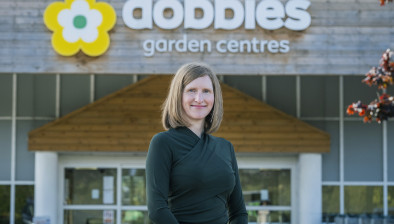Empty retail units in Scotland a fifth higher than pre-pandemic levels

Empty retail units in Scotland have risen by a fifth when compared to pre-pandemic levels, according to the latest figures published by the Scottish Retail Consortium (SRC).
In Q1 2023, the Scottish vacancy rate remained 15.7% for the fourth consecutive quarter. It was 0.1 percentage points better than the same point in 2022.
At the same time, shopping centre vacancies worsened to 20.6% in Q1 2023, from 20.5% in Q4 2022. However, on the High Street, vacancies remained unchanged at 14.8%.
Simultaneously, retail park vacancies remained unchanged at 9.8%. It remains the location with the lowest vacancy rate.
David Lonsdale, director, Scottish Retail Consortium, said: “These figures underline the torpid recovery in Scotland’s shop vacancy rate on the two-year anniversary of shops re-opening after the second pandemic lockdown.
“The level of unoccupied retail premises remains stuck at a fifth above pre-pandemic times and Scotland’s recovery from the pandemic has been weaker than in the ten other nations and regions in Great Britain. This was the fourth successive quarter in which the proportion of empty units flatlined at elevated levels, and the ninth consecutive quarter with the vacancy rate above 15%.
“Retail parks were once again the stand-out performer, with shopping centres lagging. Several factors are holding back retailers and other firms from taking on empty stores, including the costs crunch and lower shopper footfall due to the shift towards hybrid working and online purchasing.”
He concluded: “The cost of operating remains an acute issue, at a time when many stores are having to shell out capital expenditure to refit stores, install machines and systems to accommodate the proposed deposit return scheme. Scotland’s retailers warmly welcomed the freeze to the headline business rate.
“However, the decision not to match Wales and England with an enhanced rates relief for shops and hospitality businesses over the coming year was disappointing. We hope that as part of his proposed ‘New Deal’ with business the First Minister will make good on his promise to look again at business rates, including mirroring the rates relief offered elsewhere. This would aid smaller stores as well as our hard-pressed retail destinations.”
Lucy Stainton, commercial director, Local Data Company, added: “The stabilisation of vacancy rates across GB is partially indicative of operators, in the main, having a better than expected Christmas but coming into Q1 still cautious and biding their time to see how various macro-economic factors play out into 2023.
“This slowdown in activity along with the balance between pockets of growth versus sustained cost pressures has meant the first part of 2023 has seen comparatively slower structural change. That being said, whilst there has been a slowdown in the growth of independent businesses, we are seeing a number of chains return to focus on acquisitions and we predict that activity levels should ramp up between now and the end of the year, as the challenges operators face begin to ease up, with operators adapting their portfolios to meet current consumer demands, within this economic climate.
“It’s encouraging to see vacancy coming down across GB shopping centres, which were badly challenged during the covid pandemic, more so than any other location type. Again this speaks to a cautious return to growth for many chains, as well as more diversity within these schemes, as businesses who have traditionally been more high street focussed such as independents, turn their attention to shopping centre assets.”







